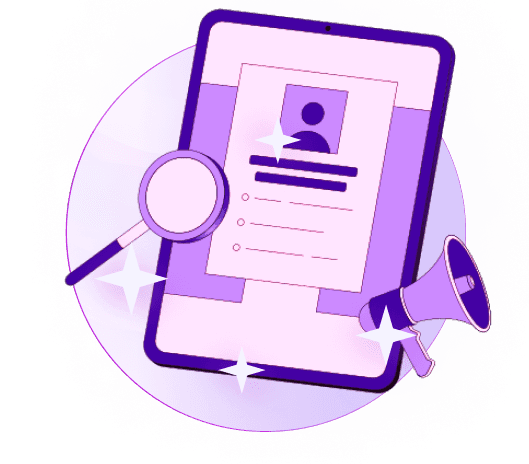Blogs
Articles

Generative AI in Sales: How It’s Transforming the Sales Process
Sales teams spend just 25% of their time selling to customers. This surprising fact is changing with Generative AI in sales. Companies that implement this technology early show win rates improving by more than 30% through task automation.
This piece dives into how generative AI is reshaping sales operations. You'll learn about specific use cases throughout the sales funnel and practical ways to implement them. Microsoft already uses generative AI in their sales applications. Their tools help sales teams write targeted customer emails and uncover valuable insights.
Our guide will help you through this new frontier in sales productivity, whether you're just starting with AI or looking to improve your current sales tech stack.
What is GenAI for sales forecasting?
Generative AI for sales forecasting marks a dramatic shift in how businesses predict future outcomes and manage their sales pipelines. Traditional forecasting methods depend on historical data and manual analysis, but GenAI employs advanced algorithms and machine learning models to analyze data from multiple sources.
GenAI for sales forecasting uses AI systems that analyze customer behavior, metrics, and patterns to generate useful predictions. These systems process information from a variety of channels. Phone calls, social media, meeting notes, pricing data, video recordings, and historical customer interactions help identify trends that humans might miss.
The numbers tell a compelling story. Companies that use AI for sales predictions achieve a 79% accuracy rate, while conventional methods only reach 51%. Businesses using AI-powered forecasting tools see a 20% boost in forecast accuracy and a 10% jump in year-over-year revenue growth.
GenAI's forecasting capabilities go beyond basic predictions through several key functions:
Discovery: GenAI assistants find relevant data within systems through natural language questions and combine internal and public data
Interpretation: Pattern and trend identification makes analytics accessible to users without specialized skills
Investigation: Statistical tests and simulations run automatically, like having a data scientist on hand
Storytelling: Results relate to different roles and turn into strategic recommendations
Key Use Cases of Generative AI Across the Sales Funnel
Generative AI reshapes every part of the sales funnel. It creates new efficiencies and makes customer experiences better. Let's get into how this technology changes core sales activities.
Lead generation and qualification
AI lead generation tools exploit big datasets to spot high-potential prospects more accurately. These systems qualify leads automatically. They look at demographic data, purchase history, and online behaviors to create distinct customer segments. Sales teams can focus on the most promising opportunities instead of doing manual work. On top of that, AI-powered chatbots change how website visitors interact. They give instant answers, help users navigate sites, and collect contact details. The chatbots customize each interaction based on visitor behavior.
Personalized outreach and messaging
Personalization is a vital part of today's sales world. Generative AI helps B2B companies craft messages that blend personal details naturally. Each communication feels handcrafted, even at scale. To cite an instance, healthcare software companies target hospital administrators with messages that address their specific challenges like high readmission rates. AI tools also pick the best time to send emails to boost open rates.
Sales forecasting and pipeline management
AI agents track deals and suggest when to move them forward. This reduces pipeline slowdowns. They analyze customer interactions from all touchpoints to give a complete view of engagement during sales. AI spots risky deals by flagging warning signs like too few contacts, stuck stages, or ghosting. Then it shows pipeline health in real-time, which helps teams know which deals might close.
Proposal and quote generation
Generative AI makes proposal creation simpler. It handles routine tasks while following guidelines. The AI scans public information to understand competitor activity. This helps position bids more strategically. Companies can create proposals faster and submit more while keeping quality high. AI also looks at market data to measure competitive rates and suggest the best pricing approaches.
Customer follow-up and retention
AI agents write and send custom follow-up emails based on how prospects behave and where they are in the sales funnel. No lead gets forgotten. Through sentiment analysis and advanced machine learning, AI understands when customers might leave. This gives practical retention insights. Companies that use custom retention offers see up to a 400 basis point improvement in retention rates. AI enables round-the-clock engagement. This matters because companies that reach out within an hour of the original inquiry are 7 times more likely to qualify leads.
Sales training and onboarding
One-size-fits-all training doesn't work anymore. AI creates learning paths that match each sales rep's strengths and weak points. It works like an always-available sales coach. It analyzes calls, emails, and presentations to give quick feedback about messaging, tone, and delivery. The system can study call recordings to show where reps lost engagement and suggest better ways to handle objections. AI agents also check content libraries for new playbooks or product updates and create training materials automatically.
How to Successfully Implement Generative AI in Sales?
Sales teams need a well-planned strategy to get meaningful results from generative AI. Let me show you how your organization can adopt it successfully:
Start with high-impact areas
Your AI implementation works best when you focus on areas where sellers need the most help. Look for processes with repetitive tasks, heavy data requirements, and chances for personalization. Pick one or two key areas like objection handling or asking effective questions instead of tackling everything at once. The best pilots target the sales life cycle's front end where sellers need help to spot, inform, and act on leads.
Clean and connect your sales data
Quality data creates the foundation for effective AI systems. Your first step should be to remove old, wrong, or unclear information—which often makes up 80% of existing data. Keep your CRM clean by maintaining current, precise, and complete customer data. You don't need perfect data—focus on what's "good enough" to move fast while fixing major gaps. Persana helps make this process more efficient through smart data preparation.
Reimagine workflows, don't just automate
Bad processes become worse when automated. Break down your sales process step by step and look for ways to make each stage better. The real benefits come when you combine AI with better processes, clean data, and focused execution. Companies using this method have seen their win rates jump by 30% or more.
Pilot, test, and iterate
Start a controlled pilot with a team that includes sales, technical, and business experts. Track clear metrics like better sales productivity or more accurate forecasts. This "pilot and iterate" method lets you test AI solutions in controlled environments before rolling them out fully. Quick proofs of concept help you find value spots while building confidence in your vision.
Secure C-level sponsorship
Top executives' support makes a huge difference—companies with strong executive backing are 3.8 times more likely to reach their goals. C-level sponsors help clear roadblocks and secure needed resources. Get your leadership team involved early, including your CIO, CRO, RevOps team, and possibly an AI Council to keep everyone's goals aligned.
What are the challenges and considerations for AI in sales?
Generative AI offers great promise for sales, but organizations face real challenges putting these technologies to work. Data privacy stands out as a major worry since AI systems just need huge amounts of customer data to work. Companies must shield this information from breaches that could hurt their reputation and customer trust.
AI systems can develop hidden biases from flaws in their training data. This bias creates a big problem that could lead to unfair treatment and targeting of certain groups. The numbers tell the story - 68% of global consumers worry about their online privacy, and 57% see AI as a real threat to keeping their information safe.
The sweet spot between AI automation and personal connection is a vital part of success. About 60% of customers still want to talk to real people, especially when making big decisions. Companies that get this balance right see their revenue grow up to 15%.
Getting teams on board creates another hurdle. Many salespeople fear losing their jobs to AI. They often say things like "AI will replace sales jobs" and "AI can't understand nuances of human communication".
Ethics play a key role too. Issues like transparency, minimal data use, and fair algorithms mean companies need solid governance frameworks. The path to successful AI adoption means tackling these challenges while protecting the human relationships that drive sales.
Conclusion
Generative AI is leading the sales transformation and creates new ways to improve productivity and boost revenue growth. Companies that strategically use these technologies get major competitive advantages. They can forecast better, personalize customer interactions, and simplify their processes. The economic effects are huge, with potential value reaching trillions of dollars in marketing and sales.
Smart implementation matters more than quick adoption for AI to succeed. Sales teams should first spot their best opportunities, check their data quality, and redesign their workflows instead of just automating what exists. Data privacy issues, algorithmic bias, and change resistance pose challenges. But detailed governance frameworks and proper change management can solve these problems.
The sweet spot between AI efficiency and human connections remains most important. Successful sales teams know that AI is a powerful tool to boost human abilities—not replace them. When companies find this balance, they see better win rates, more accurate forecasts, and stronger sales results.
Tools like Persana can help sales teams direct this AI transformation. These tools provide smart data prep and useful insights while keeping the personal touch that customers value.
The generative AI revolution in sales has started without doubt. Companies that use these technologies wisely and handle challenges carefully will succeed in today's competitive market. Tomorrow's winners will be sales teams that effectively use AI while keeping strong customer relationships that drive buying decisions.
Key Takeaways
Generative AI is revolutionizing sales by automating non-value tasks and enabling teams to focus on actual selling, with early adopters seeing dramatic improvements in performance and efficiency.
• AI dramatically improves sales outcomes: Companies using AI see 30% better win rates and 79% forecasting accuracy versus 51% with traditional methods.
• Focus on high-impact areas first: Start with repetitive tasks like lead qualification and personalized outreach rather than trying to transform everything at once.
• Data quality is foundational: Clean, connected CRM data is essential—up to 80% of existing data may need elimination before AI implementation.
• Reimagine workflows, don't just automate: The real value comes from combining AI with process redesign, not simply automating existing mediocre processes.
• Balance automation with human touch: 60% of customers prefer real interactions during critical decisions—successful companies maintain this balance for 15% revenue uplifts.

Create Your Free Persana Account Today
Join 5000+ GTM leaders who are using Persana for their outbound needs.
How Persana increases your sales results
One of the most effective ways to ensure sales cycle consistency is by using AI-driven automation. A solution like Persana, and its AI SDR - Nia, helps you streamline significant parts of your sales process, including prospecting, outreach personalization, and follow-up.



